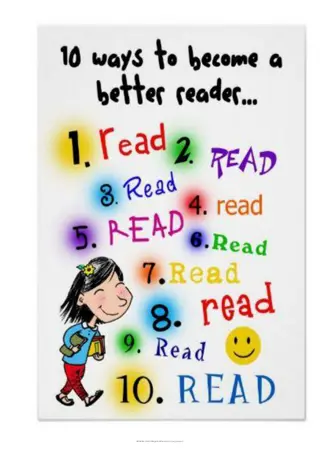Exploring Close Reading and Vocabulary in "St. Lucy's Home For Girls Raised by Wolves
Dive into a lesson agenda focusing on close reading, vocabulary building, and textual analysis of the book "St. Lucy's Home For Girls Raised by Wolves" by Karen Russell. Discover how authors use specific words to evoke a sense of place, annotate connections in the text, and explore unique vocabulary terms related to Jesuits, lycanthropy, and more.
Download Presentation

Please find below an Image/Link to download the presentation.
The content on the website is provided AS IS for your information and personal use only. It may not be sold, licensed, or shared on other websites without obtaining consent from the author. Download presentation by click this link. If you encounter any issues during the download, it is possible that the publisher has removed the file from their server.
E N D
Presentation Transcript
St. Lucys Home For Girls Raised by Wolves By Karen Russell
Lesson 1 Agenda September 26--30 Goals/ Focus Vocabulary Standards: RL.9-10.1, RL.9-10.4 Close Read Requirements St. Lucy s Home For Girls Raised by Wolves pp.225-229 Reading and Discussion Quickwrites 1 and 2 Closure
Goals / Focus EQ: How does an author use specific words and phrases to evoke a sense of place? Close Reading Using Textual Evidence
Quickwrite 1 What do you know about close reading? What do you know about werewolves? What does this question from the previous slide mean? How does an author use specific words and phrases to evoke a sense of place? Share?
Vocabulary Example K I M Strategy Key Word Information: government by the people; a form of government in which the supreme power is vested in the people and exercised directly by them or by their elected agents under a free electoral system. Memory Cue Democracy
Lesson 1 Vocabulary Begin a vocabulary section in Core Lit. 1. Jesuit (adj.) of or pertaining to Jesuits, a male Roman Catholic religious order 2. lycanthropic (adj.) of or pertaining to the delusion in which one imagines oneself to be a wolf 3. stage (n.) a single step or degree in a process 4. initial (adj.) first 5. period (n.) any specified division or portion of time
Marking the text for close reading This confused me = ? This is important = This is surprising = I can make a connection = Annotate connections in the margins Circle unfamiliar words--define in margins Highlight quotes you intend to use in your analysis of the text
Marking the text: annotation Per. 3 10/3 Helps you remember what you are reading by writing your thinking on the text Keep track of important ideas unpackage unfamiliar words questioning the text and making connections between ideas Turn to Stage 1 epigraph of St. Lucy s Home for Girls Raised by Wolves
Language used in Standards Figurative language is language that expresses an idea in an interesting way by using words that usually describe something else. Connotative meaning is a suggested or associated meaning in addition to a word s primary meaning. Cumulative means including or adding together all of the things that came before. Evokes means brings (a memory, feeling, image, etc.) into the mind. Tone is an author s attitude toward his or her subject.
Standards: RL.9-10.1, RL.9-10.4 1.Take out your learning standards tool. 2.Grab a partner, read, markup and discuss each standard. 3.Paraphrase each standard beginning with the phrase I can 4.Be prepared to share out
Paraphrase Standards Example RL.9-10.1: Cite strong and thorough textual evidence to support analysis of what the text says explicitly as well as inferences drawn from the text. ex: I can select the right textual evidence to support my analysis of the text by using what is there and by making inferences
Respond to this quote in section two of your binder. Copy it as it stands then interpret it in your own words. If you don't like something, change it. If you can't change it, change your attitude. Maya Angelou
How to Respond to Quotes Include, or incorporate the quote Use quotes ... name author I agree/disagree with Rick Warren when he said We are products of our past, but we don t have to be prisoners of it because Rick Warren once said, We are products...it. This is true/untrue because Rick Warren correctly noted that we are...it We are products...it due to the abundance of opportunities our country offers to improve yourself (Warren 5).
Responding to quotes example Science is the search for truth, that is the effort to understand the world: it involves the rejection of bias, of dogma, of revelation, but not the rejection of morality. --Linus Pauling Linus Pauling once said, Science is the search for truth, that is the effort to understand the world: it involves the rejection of bias, of dogma, of revelation, but not the rejection of morality. Pauling is saying that science is whatever you make of it. Science has various components and nothing is considered wrong until it s scientifically proven. Almost every aspect of society dates back to science. Science is essential to many things. Pauling is comparing society to science metaphorically. We search for the truth, face rejection of bias, dogma, revelation but in the end we're all one in the same. We are all moral beings.
Fix it up Now that you know better, do better. Rewrite your response to the quote for today using the guidelines you were given.
What is the relationship between these photos and St. Lucys Home For Girls raised by wolves?
What is lycanthropic culture shock? What in the text tells you this? Where in the text did you find this? Who is the audience, and how do you know?
TDQ 1: Select a partner. Reread the epilogue and the first paragraph slowly, and carefully. Keep in mind your standards and vocabulary. Answer the following questions: 1. How does Russell begin the story? 2. Who is The Jesuit Handbook on Lycanthropic Culture Shock written for? 3. How does the word home: in the title begin to develop your understanding of the story? 4. Who is the pack? How do you know? 5. What does the epigraph suggest about the time the girls will spend at St. Lucy s ? 6. Describe the tone of the epigraph. Be prepared to share out.
Quickwrite 2 Identify two specific word choices in the title and epigraph and explain how these words evoke a sense of place. (What words or phrases are used to reveal setting?)
Exit Slip 1: on a half sheet of paper... Name ___________________ Period In complete sentences, name two things about St. Lucy s that you did not understand on the first read-through that are clearer to you now.
Homework Daily: Part of your homework is to read outside of class from a novel. This is called AIR (Accountable Independent Reading). As soon as you finish Twisted, your homework is to look for an appropriate text to read for Accountable Independent Reading (AIR) by determining two criteria for the kind of text that you want to read, e.g., topic, genre, fiction or nonfiction.
Respond to the quote in your ELA notebooks. Be sure to include the quote and author in your response. We are products of our past, but we don't have to be prisoners of it. Rick Warren
Lesson 2 Agenda Goals/ Focus Standards Vocabulary St. Lucy s pp.229-240 Reading, discussion, and text-dependent questions (TDQs) Quickwrite 3
Standards: RL.9-10.4 1.Take out your learning standards tool. 2.Grab a partner, read, markup and discuss each standard. 3.Paraphrase each standard beginning with the phrase I can 4.Be prepared to share out
Goals/ Focus EQ: How is a character s tone revealed and developed over the course of a text? Impact of word choice Using textual evidence
Lesson 2 Vocabulary 1.dislocation (n.) the state of being out of place 2.shunned (v.) avoided deliberately and especially habitually 3.etiquette (n.) conventional requirements for social behavior 4.rehabilitations (n.) the states of being taught to live a normal and productive life
Close Read pages 229-240 Stage 2 1.What do we learn about the narrator in this excerpt? 2.What specific details about their behavior does Russell use to describe Mirabella s and Jeanette s places in the pack? 3. How does Claudette describe her place in the pack? 4.What tone does Claudette use in her description of Mirabella s behavior?
Respond to the following quote by rephrasing it in your own words: The first step toward change is awareness. The second step is acceptance. ---Nathaniel Branden
Quickwrite 3 lesson 2 Answer on a half sheet of paper: (Tone is the author or speaker s attitude or feelings about the topic.) Describe Claudette s tone in her description of Stages 2 and 3 of lycanthropic culture shock. Cite specific textual evidence to support your response.
Exit slip 2 What are some of the lessons the pack is learning at St. Lucy s? Cite at least three pieces of textual evidence to support your response. You may use your texts and notes to answer this prompt.
Answering TDQs...1, 2, 3 Make a claim (answer the question) 1 Provide cited textual evidence to support your claim 1 Analyze what the claim and evidence reveal your interpretation...the so what? 1 +_____ 3 pts
Sample TDQ How does the author structure the first paragraph of the text to communicate setting and conflict? The first paragraph begins by engaging the reader with a terrifying event. It establishes that Malcolm X and his family are the victims of persecution and racist treatment; men surround his house brandishing their shotguns and rifles (p.1) simply because his father is encouraging African Americans to return to Africa since equality seems impossible in America.
9.1.1 Lesson 3 Agenda EQ: Standards Vocabulary St. Lucy s Home for Girls Raised by Wolves pp.240- 246 TDQs 3 Quickwrite 4 Closure
Essential Question (EQ) EQ: How do characters develop over the course of a text? Focus: character interactions and actions
Respond to the quote below in section two of your binder. Restate it in your own words and discuss how you feel about it. Do you agree? If having a soul means being able to feel love and loyalty and gratitude, then animals are better off than a lot of humans. James Herriot
Standards RL.9-10.3, SL.9-10.1.c Steps: 1.Grab a partner 2.Close read standards 3.Discuss with your partner 4.Paraphrase the standard 5.Be prepared to share out
Add to your vocabulary section using the KIM strategy: 1.frog-marched (v.) forced a person or persons to march with their arms held firmly behind the back 2. muzzle (n.) a device placed over an animal s mouth to prevent the animal from biting 3.intercepted (v.) seen or overheard (a message, transmission, etc.) meant for another
Masterful Reading 1.Turn to page 240 of St. Lucy s Home for Girls Raised by Wolves by Karen Russell 2.Read along with me silently 3.Mark the text with a capital M when you read something that reveals how Mirabell behaves. How does Mirabella Act?
Work Period TDQs 3 Re-read pp. 240 246 of St. Lucy s Home for Girls Raised by Wolves and answer the following TDQs: 1.How does Mirabella treat Jeanette and Claudette at the beginning of Stage 4? 2.How do the nuns treat Mirabella at the Debutante Ball? 3.Why does Mirabella jump on Claudette?
Quick Write 4 Answer the prompt on a half sheet of paper: How does Mirabella interact with the rest of the pack?
Respond to the quote below in section two of your binder by interpreting it. What do you think it means? Be prepared to share your response. Our lives are defined by opportunities, even the ones we miss. Eric Roth
ELA I Lesson 4 Agenda Standards/ Essential Question Vocabulary St Lucy s Home for Girls Raised by Wolves pp.225- 227 Work period Quickwrite 5 Closure Homework
You will need your standards tool Standards: RL.9-10.1,RL.9-10.3, SL.9-10.1.c,L.9- 10.4.a Steps: 1.Grab a partner 2.Close read standards you have not completed 3.Discuss with your partner 4.Paraphrase the standard 5.Be prepared to share out
Essential Question /focus How does Russell develop the pack as a character in itself?
Vocabulary 4 1.hirsute (adj.) hairy; shaggy 2.sinewy (adj.) muscular; strong 3.barbaridad (Spanish n.) crudity of style, taste, expression, etc. 4.apiary (n.) a place where bees are kept 5.pidgin (n.) any broken form of a language 6.purgatory (n.) any condition or place of temporary suffering
TDQs 4 1.Why were the nuns faces pinched with displeasure ? 2.What is the impact of the narrator s use of the pronoun we to describe the pack? 3.How does the comparison of the pack to the Copacabana girls develop the pack as a character? 4.Given the pack s behavior, what can you infer Sister Josephine means by backwoods )?
TDQs 4 continued 5. How are the girls different from their parents? What causes this difference? 6. What can you infer about the meaning of ostracized, given the relationship of the pack s parents to the farmers and the local wolves? 7. Why do the pack s parents enroll their daughters in St. Lucy s? 8. Describe the pack s interactions with each other and other characters (e.g., the nuns, their families, local wolves).
Respond to the quote below in your ELA notebooks by defining the key words and telling whether you agree and why or why not. Success is the result of perfection, hard work, learning from failure, loyalty, and persistence. Colin Powell
Paraphrasing Vs Quoting They lived an outsider s existence in caves at the edge of the forest, threatened by frost and pitchforks." (p. 227) The narrator explains, They lived an outsider s existence in caves at the edge of the forest (p. 227). What is the same? Different? They were outsiders who were threatened by farmers and the elements.
Quickwrite 5 How does Russell develop the pack as a character?























